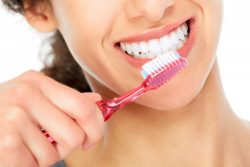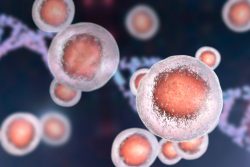Heavily Processed Foods and Health Issues
 A new small scale controlled research trial, the first of its kind, has linked consumption of ultra processed foods to overeating and weight gain. People who eat these kinds of foods typically eat more calories when compared to eating a minimally processed diet.
A new small scale controlled research trial, the first of its kind, has linked consumption of ultra processed foods to overeating and weight gain. People who eat these kinds of foods typically eat more calories when compared to eating a minimally processed diet.
Observational studies previously conducted looked at large groups of people had indicated associations between health problems and diets high in processed foods. However, these studies randomly instructed people to consume specific foods and then measured results. Researchers could not say for sure if the processed foods were problematic on their own or people had a variety of health problems due to other reasons.
The study conducted at the NIH’s National Institute of Diabetes and Digestive and Kidney Diseases, involved 20 adult volunteers. This was the first randomized controlled trial to examine effects of an ultra processed foods diet which are defined by the NOVA classification system. Ultra processed foods are foods that have ingredients predominantly found in industrial food manufacturing. This includes foods such as high fructose corn syrup, hydrogenated oils, emulsifiers and flavoring agents.
The people involved in the study were healthy volunteers and included 10 male and 10 female participants. They were all admitted to the NIH Clinical Center for one continuous month. In random order for two weeks, they were provided with meals made up of minimally processed foods or ultra processed foods.
An ultra processed breakfast would have included bagel with cream cheese and turkey bacon. The unprocessed breakfast would have included oatmeal with walnuts bananas and skim milk. The difference between the two diets is very subtle on the surface as both diets included eggs, beans, cereals and pastas. However, the unprocessed foods included ingredients that were fresher with no added preservatives or additives and included unrefined ingredients and whole foods.
Both diets had the same quantities of sugars, calories, fiber, fat and carbohydrates. Participants were allowed to eat as much or as little as they preferred during an hour long period. Although the current study involved just 20 adults, the results from the tightly controlled experiment indicated a consistent and clear difference between the two diets.
The research team measured changes in the participant’s appetite, insulin sensitivity, glucose and a variety of other physical and metabolic factors.
People on the ultra processed diet consumed about 500 calories more per day then was consumed on the unprocessed diet. It was observed that they also ate faster on the processed diet and gained weight. They lost weight on the unprocessed diet. On average, participants gained 2 pounds during the ultra processed diet period and lost about the same amount of weight when on the unprocessed diet.
The research team isn’t quite sure why people tended to eat more with the ultra processed foods as the tastiness of the processed and unprocessed food items were rated by the participants as the same. One thought is the way unprocessed, whole foods interact with hormones that can help suppress appetite so people tend to pay more attention to the natural cues when they are full. Another thought is that people tend to eat processed foods faster which doesn’t allow our body to register when we are full even when we have overeaten.
Processed foods have been linked to increased cancer risk and shorter life spans. Too much fat, too much sugar and too much salt have long been identified as culprits responsible for expanding waistlines and soaring obesity rates.
Calories add up over time which can lead to weight gain which can lead to serious health problems. Studies such as this help researchers understand the role of nutrition in health and can help people choose foods that are both accessible and nutritious.Unfortunately, ultra processed foods can be hard to restrict. It takes more money and time to prepare less processed foods. Telling people to eat healthier alone might not be effective for some people without access to healthier food choices. The sheer convenience of prepackaged, processed foods has advantages in terms of convenience and shelf life which keeps people buying and consuming them. And another factor between processed and unprocessed foods is price. The foods included in the recent study were priced at about $106 per week for the ultra processed foods and $151 per week for the unprocessed foods.
The team now needs to figure out what specific aspect of the ultra processed diet affects people’s consumption behavior which led to weight gain. Their next step is to design additional studies with a reformulated ultra processed diet to see if any changes can make the diet effect on intake of calories and body weight disappear. Slight differences in protein levels between the unprocessed and ultra processed diets could possibly explain as much as ½ the difference in calorie consumption.
To view the original scientific study click below
Ultra-Processed Diets Cause Excess Calorie Intake and Weight Gain: An Inpatient Randomized Controlled Trial of Ad Libitum Food Intake.


 A simple tweak to a night owls sleeping patterns could help with sleep/wake timings, better eating habits, improved morning performance, and a decrease in stress and depression. Night owls are people with late waking and sleep habits.
A simple tweak to a night owls sleeping patterns could help with sleep/wake timings, better eating habits, improved morning performance, and a decrease in stress and depression. Night owls are people with late waking and sleep habits. A new study conducted by researchers at the University of Bergen, Norway, have discovered a significant connection between good oral health and Alzheimer’s Disease. They determined that gingivitis has a very decisive role in whether someone develops this disease or not.
A new study conducted by researchers at the University of Bergen, Norway, have discovered a significant connection between good oral health and Alzheimer’s Disease. They determined that gingivitis has a very decisive role in whether someone develops this disease or not. It has been suspected that our body’s various circadian clocks are able to operate independently from our central clock located in the hypothalamus of the brain. At the University of California, Irvine, scientists have found a way to test the theory.
It has been suspected that our body’s various circadian clocks are able to operate independently from our central clock located in the hypothalamus of the brain. At the University of California, Irvine, scientists have found a way to test the theory. New research has revealed that there are potential side effects and ongoing ramifications from long term protein intake or from certain types of amino acids. There has long been popularity and attention paid to consumption of proteins, however less attention has been paid to looking at its possible problems.
New research has revealed that there are potential side effects and ongoing ramifications from long term protein intake or from certain types of amino acids. There has long been popularity and attention paid to consumption of proteins, however less attention has been paid to looking at its possible problems. A recent study at the University of Copenhagen has revealed findings that could make it easier to manipulate stem cells for stem cell therapies. These new findings challenge the traditional knowledge of the development of stem cells.
A recent study at the University of Copenhagen has revealed findings that could make it easier to manipulate stem cells for stem cell therapies. These new findings challenge the traditional knowledge of the development of stem cells.

 A new study of older Australians has shown how simple, easily doable changes to a person’s daily routine is key to good health of the brain, particularly cognitive performance. The study referred to as the Brains Breaks’ study, shows that not all aspects of cognition will respond in the identical manner to a given dose of exercise. It is possible to manipulate patterns of activity throughout a day to optimize specific cognitive outcomes.
A new study of older Australians has shown how simple, easily doable changes to a person’s daily routine is key to good health of the brain, particularly cognitive performance. The study referred to as the Brains Breaks’ study, shows that not all aspects of cognition will respond in the identical manner to a given dose of exercise. It is possible to manipulate patterns of activity throughout a day to optimize specific cognitive outcomes. A group of researchers from Penn Engineering have discovered through novel imaging techniques that stem cells can actually control their transformation into other kinds of cells. This means that cells may have more control over their fate contrary to previous thought.
A group of researchers from Penn Engineering have discovered through novel imaging techniques that stem cells can actually control their transformation into other kinds of cells. This means that cells may have more control over their fate contrary to previous thought.